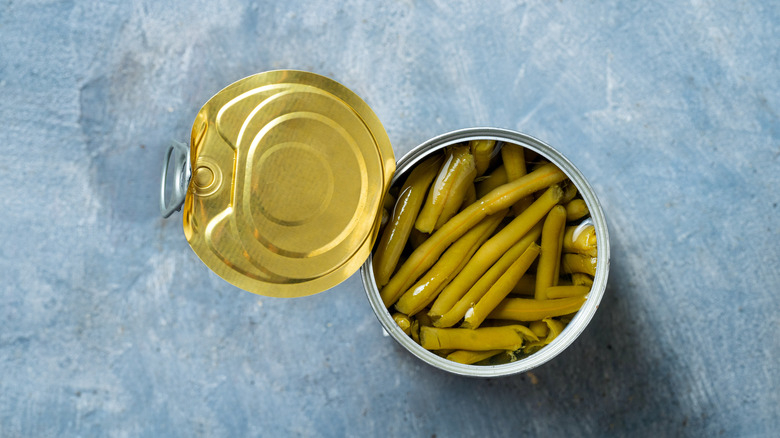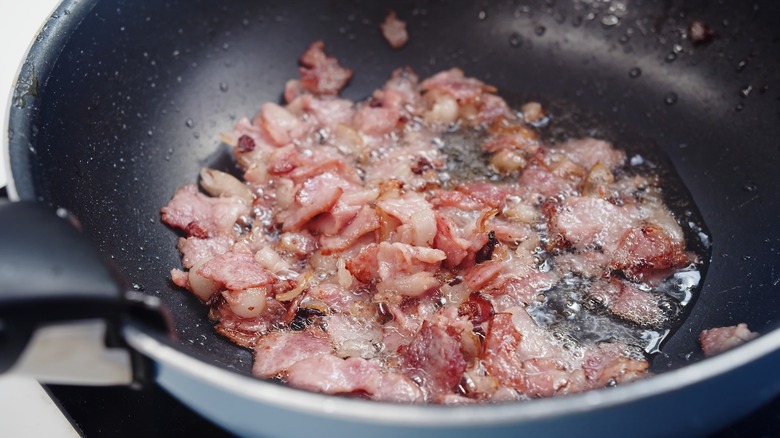Give Canned Green Beans A Burst Of Flavor With One Smoky Addition
Let's face it — there are probably few people who can say they crave canned green beans. Sure, they're as healthy as their fresh or frozen counterparts, but the texture and flavor aren't quite the same as a more glamorous-sounding side of fresh haricots verts. Fortunately, you can easily dress them up. And while there are a number of ingredients you can add to take canned beans to the next level, one of the best ways to infuse them with smoky flavor is with bacon.
Using bacon to upgrade your beans is a cinch and there are a few ways to do it. One easy way is to cook the bacon briefly in a skillet before adding the beans and then finishing them together. However, braising the crisped bacon and the beans in chicken stock is another option that will infuse the beans with meaty flavor. But if you really want to maximize that bacony goodness, opt for a low, slow, and economical braising option; swap out the chicken stock and use the liquid that the green beans are packed in instead. Simply cook the bacon for a short amount of time, then add the juice from the green bean can to the pot. Once the mixture of bacon grease and green bean liquid is hot, pour in the beans and let them simmer so that they can soak up all of that smoky deliciousness.
Tips for cooking canned green beans with bacon
The beauty of cooking up canned green beans lies in its simplicity, but there are still mistakes that can be made when preparing canned beans. One of the most common ones is not paying enough attention to the seasoning. Canned green beans, unless they're labeled "salt-free," often contain quite a bit of sodium, so be sure to avoid adding too much salt while cooking, especially when you're adding bacon to the ingredient list. If you do find that your green beans with bacon are a little too salty, try balancing it out by adding acidic ingredients like citrus or vinegar. Or, you can add raw potato slices to your braising liquid to cut down on its saltiness.
There are a few potential pitfalls when cooking up bacon, too. First, always start with room temperature bacon and a cold pan. Allowing the bacon to heat at the same rate of the pan gives allows the fat to melt and the meat to cook simultaneously. Also, it's important to choose the right bacon thickness. For this dish, since the bacon needn't be crispy, you can opt for thick-cut bacon. Or, it may be most convenient to buy a slab and slice it up as thick as you like. However, if you'd prefer to add more bacon as a garnish, you may want to try a thinner variety that will crisp up and give the beans some crunchy texture.


